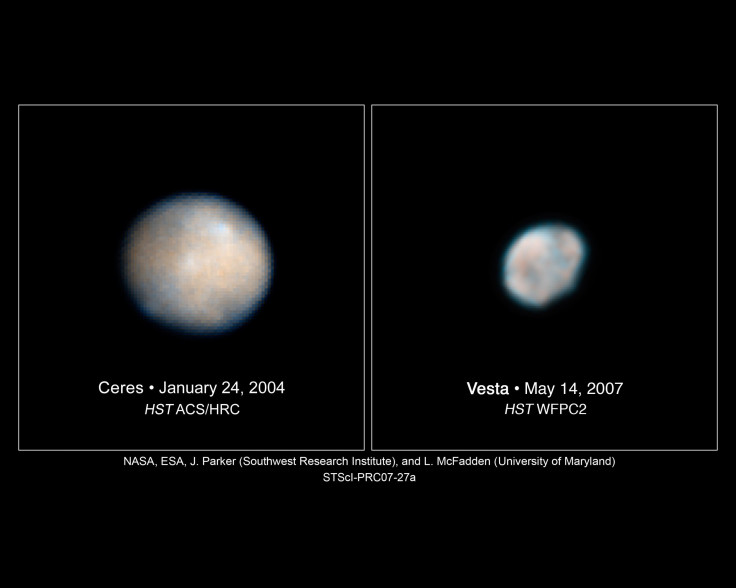NASA's Dawn Spacecraft Snaps Ceres' Portrait From 90,000 Miles Away

As NASA's Dawn spacecraft gets closer to Ceres, expect even more detailed images of the dwarf planet. The space agency has released a new image of Ceres taken by Dawn from 90,000 miles away. The spacecraft is traveling around 231 mph and is expected to reach the dwarf planet in March.
Ceres may be classified as a dwarf planet, but it's the largest object in the asteroid belt between Jupiter and Mars. While it is relatively small, measuring 590 miles in diameter, it's of great scientific interest for NASA. Ceres could contain water under its icy surface and shares some traits with other rocky bodies in the inner solar system. While there is plenty of attention on Ceres, Dawn's other target is the asteroid Vesta, which measures 359 by 285 miles. While the two objects formed in the same area, they are very different and NASA wants to know how Dawn and Vesta evolved over time. These observations will provide new insights into planet formation and the origin of the solar system.

"The three principal scientific drivers for the mission are first that it captures the earliest moments in the origin of the solar system enabling us to understand the conditions under which these objects formed. Second, Dawn determines the nature of the building blocks from which the terrestrial planets formed, improving our understanding of this formation. Finally, it contrasts the formation and evolution of two small planets that followed very different evolutionary paths so that we understand what controls that evolution," NASA explained in its mission objective.

Each new image from Dawn will be the "best one yet" of Ceres, which will shed new light on the dwarf planet, NASA said. A white spot has been observed on Ceres by Hubble and Dawn, but scientists are not sure what to make of the dot. "We are already seeing areas and details on Ceres popping out that had not been seen before. For instance, there are several dark features in the southern hemisphere that might be craters within a region that is darker overall," Carol Raymond, deputy principal investigator of the Dawn mission, said in a statement. As for Vesta, Dawn provided researchers with a detailed look at the massive crater located on its south pole.
Below is an animation of Ceres created from the latest Dawn images:
© Copyright IBTimes 2024. All rights reserved.






















